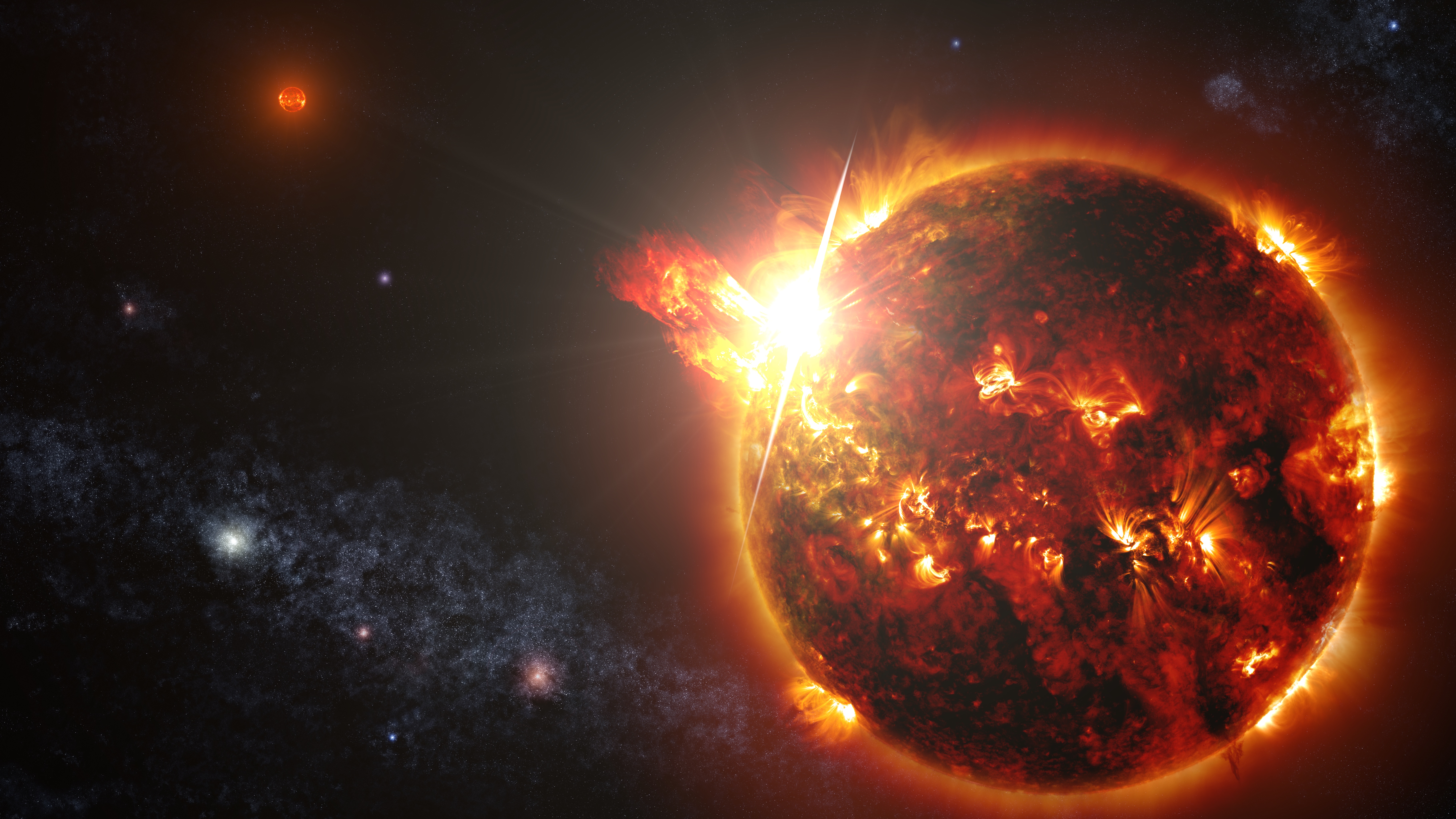A series of megaflares unleashed earlier this year by a nearby red dwarf has astronomers rethinking just what these small, dim stars are capable of.
On April 23, NASA's Swift satellite spotted the enormous star flare coming from DG Canum Venaticorum (DG CVn), a system of two red dwarfs located about 60 light-years from Earth. The eruption put to shame anything ever seen on the sun, whose strong flares are classified into three categories, with C flares being the weakest, M of medium strength and X the most powerful.
"The biggest flare we've ever seen from the sun occurred in November 2003 and is rated as X45," Stephen Drake, an astrophysicist at NASA's Goddard Space Flight Center in Greenbelt, Maryland, said in a statement. "The flare on DG CVn, if viewed from a planet the same distance as Earth is from the sun, would have been roughly 10,000 times greater than this, with a rating of about X100,000." [Biggest Solar Flares of 2014: Sun Storm Photos]

For a few minutes, the superflare's X-ray brightness outshone both stars' total luminosity in all wavelengths, researchers said. The eruption's temperature reached 360 million degrees Fahrenheit (200 million degrees Celsius) — about 13 times hotter than the sun's core.
But DG CVn wasn't done yet, firing off a number of other flares over the next 11 days, with each one being a bit weaker than the last. X-ray emission from the system finally returned to baseline levels 20 days after the April 23 event.
DG CVn's sustained activity surprised scientists.
"We used to think major flaring episodes from red dwarfs lasted no more than a day, but Swift detected at least seven powerful eruptions over a period of about two weeks," said Drake, who gave a presentation about the DG CVn superflare in August at a meeting of the American Astronomical Society’s High Energy Astrophysics Division. "This was a very complex event."
Get the Space.com Newsletter
Breaking space news, the latest updates on rocket launches, skywatching events and more!
Both of the stars in the DG CVn system are about one-third as massive as the sun. They orbit about 3 astronomical units from each other — too close for Swift to tell which one of them was responsible for the big flares this year. (One astronomical unit, or AU, is the average distance from Earth to the sun — about 93 million miles, or 150 million kilometers).

The sun may once have blasted out megaflares, too. A star's rotational speed decreases as it ages, and our sun is middle-aged at about 5 billion years old. The DG CVn stars are just 30 million years old or so, researchers said.
Follow Mike Wall on Twitter @michaeldwall and Google+. Follow us @Spacedotcom, Facebook or Google+. Originally published on Space.com.
Join our Space Forums to keep talking space on the latest missions, night sky and more! And if you have a news tip, correction or comment, let us know at: community@space.com.

Michael Wall is a Senior Space Writer with Space.com and joined the team in 2010. He primarily covers exoplanets, spaceflight and military space, but has been known to dabble in the space art beat. His book about the search for alien life, "Out There," was published on Nov. 13, 2018. Before becoming a science writer, Michael worked as a herpetologist and wildlife biologist. He has a Ph.D. in evolutionary biology from the University of Sydney, Australia, a bachelor's degree from the University of Arizona, and a graduate certificate in science writing from the University of California, Santa Cruz. To find out what his latest project is, you can follow Michael on Twitter.









